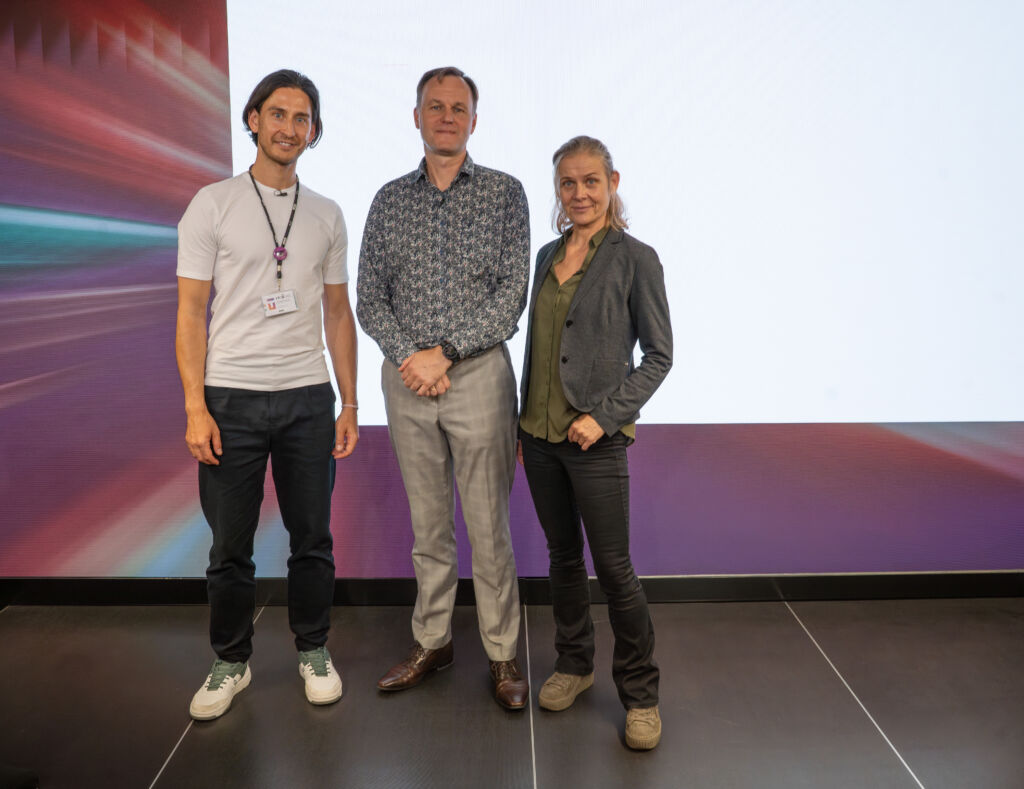Network Spotlight on Interdisciplinary Pathways for Technology Regulation and Standardization
The latest IT:U Network Spotlight gathered researchers and industry experts to explore how technology regulation and standardization shape our lives. Fellow Professors Elisabeth Staudegger and Vladislav Fomin shared insights from law and IT design studies, showing how only interdisciplinary approaches can address the complexities of regulating emerging technologies such as AI.
AI Regulation and the Role of Standardization – Fellow Prof. Elisabeth Staudegger
Prof. Elisabeth Staudegger traced how European lawmakers developed frameworks to ensure safety in a technologized world. Starting with the New Approach in the 1980s and its confirmation in the New Legislative Framework in 2008, legislators defined what needs to be ensured (safety) but left how to industry and manufacturers. Today, this approach underpins the regulation of AI through harmonised standards.
Real-life applications include:
- AI Act and harmonised standards – the interaction between European law and technical standards shows how AI systems must meet safety requirements while leaving room for innovation.
- European product safety law – since the 1980s, this approach has ensured that everyday products meet safety goals without prescribing technical details.
- Standardization as cooperation – the legislator works with Standardization institutes, creating a framework that still defines how safety and innovation are balanced in today’s technologized world.
“Using the AI Act as an example, I will show how European law interacts with harmonised standards—and why this raises the need for interdisciplinary research and teaching, both core elements of IT:U. Ultimately, the overarching goal is peaceful coexistence in a technologized world.”
Elisabeth Staudegger, Fellow Professor of IT Law and Standardization
RegTech: Between Individual Affordances and Socio-Technical Paradigms – Fellow Prof. Vladislav Fomin
Prof. Vladislav Fomin introduced RegTech, the study of how regulation and technology intersect on multiple levels. Regulation can be of technology—such as the EU AI Act, privacy, or environmental standards—or by technology, when apps or digital interfaces subtly or explicitly steer user behaviour. His talk highlighted the dual nature of RegTech, requiring researchers to zoom in and out—between micro-level design and individual use of IT and macro-level governance and societal effects.Real-life applications include:
- AI Act – a clear example of regulation of technology, setting requirements for safe AI development and deployment.
- Financial services – RegTech tools help banks and institutions comply with increasingly complex regulations.
- User interface design – everyday apps regulate behaviour by design, such as interfaces that guide or restrict user choices.
“A popular proverb says you can’t see the forest for the trees. Perspective is what matters. Sometimes it is important to zoom in on the trees, other times to zoom out on the forest. One can study the mutual effects of technology and regulation at the individual, organizational, or societal level, and from different disciplinary perspectives. It is fascinating how the ‘vision of the forest’ emerges when the researcher applies the right methodological tools and theoretical perspectives—understanding how social, legal, historical, technological, and other factors establish the socio-technical paradigms we live in or strive to create.”
Vladislav Fomin, Fellow Professor of Regulatory Technology
You are currently viewing a placeholder content from YouTube. To access the actual content, click the button below. Please note that doing so will share data with third-party providers.
More InformationAbout the Network Spotlight
The Network Spotlight at IT:U offers a unique opportunity to hear firsthand from our Fellows, who are driving innovative research across disciplines. It also highlights IT:U’s role as a Network University—connecting scholars, innovators, and thought leaders in powerful new ways.
📅 Save the date: The next Network Spotlight takes place on 7 October 2025 with IT:U Fellow Prof. Peter Balazs, who will speak on “Frame Theory: The Mathematical Foundation for Acoustics, Quantum Physics, Numerics and Machine Learning”.
